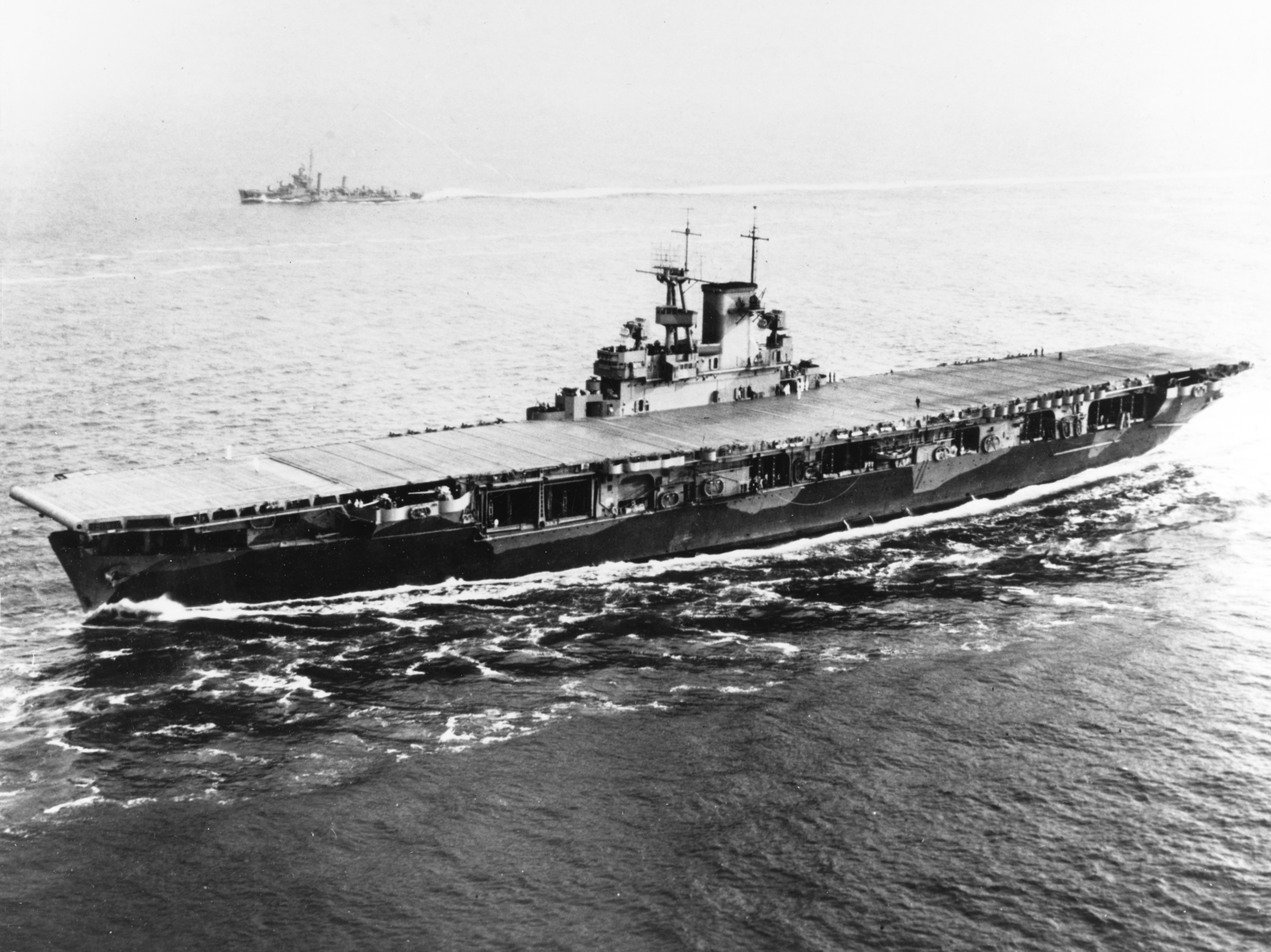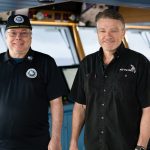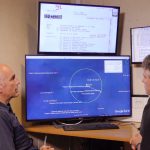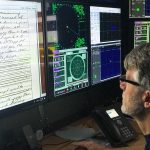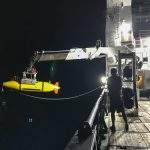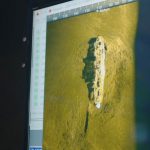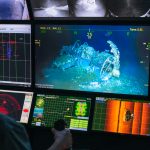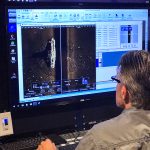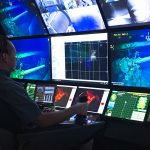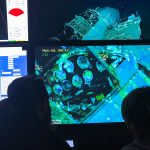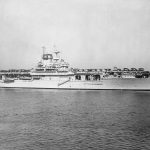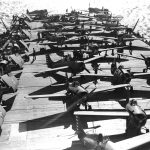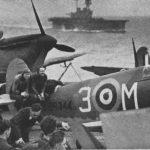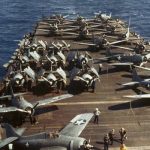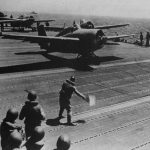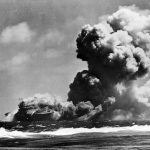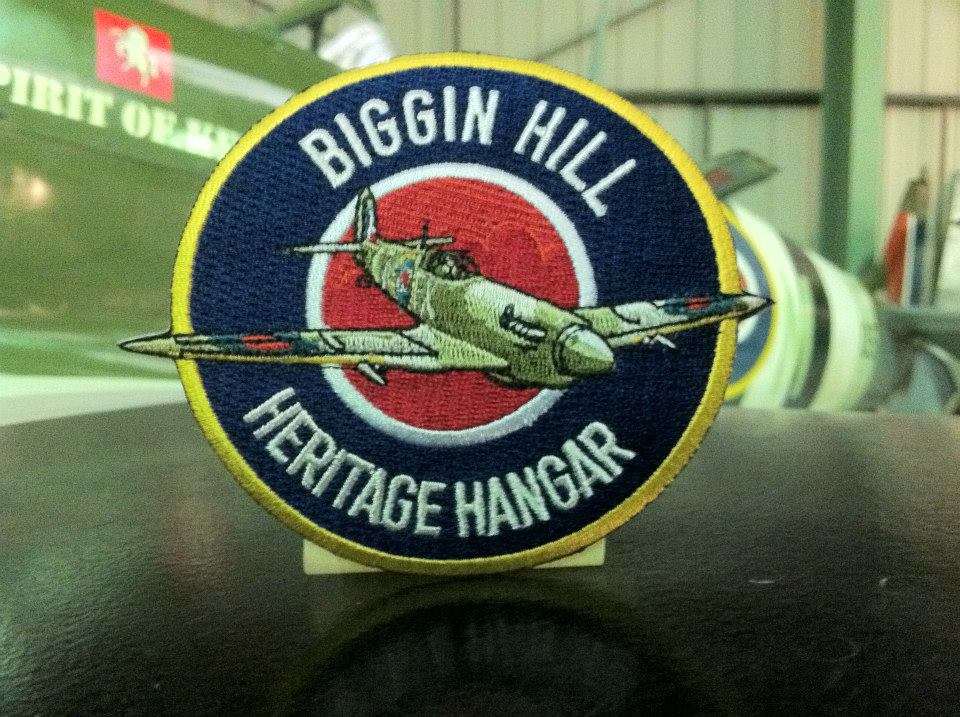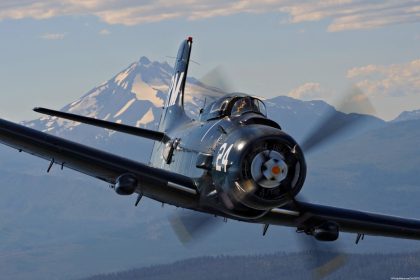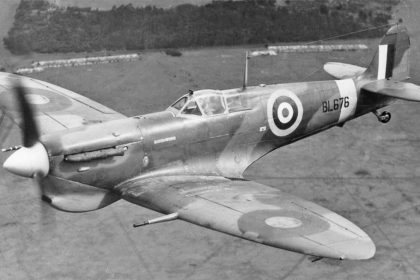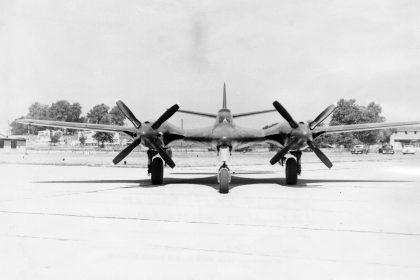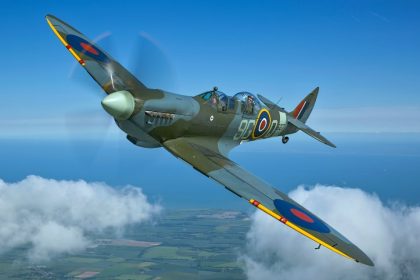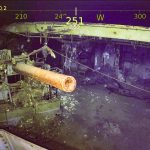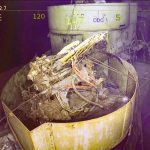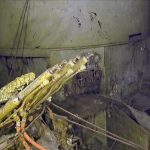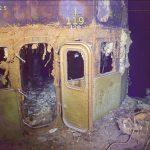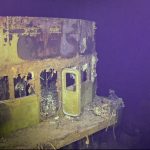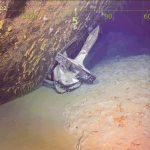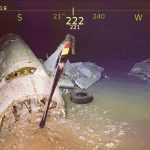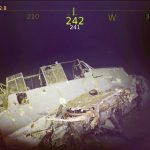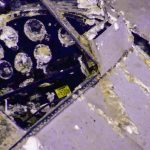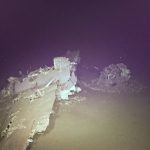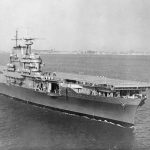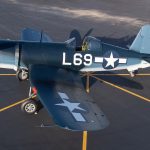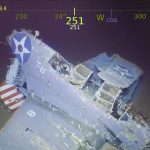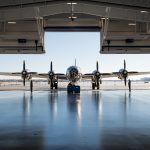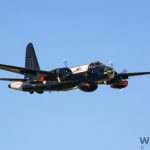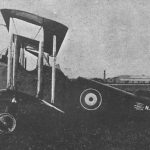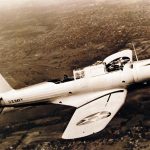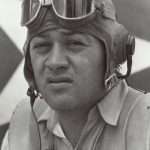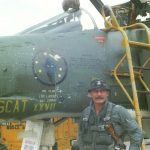Unbeknownst to almost all us at the time we reported the discovery last month of the U.S. Navy aircraft carrier U.S.S. Hornet (CV 8) on the bottom of the Pacific Ocean, the team aboard the late Paul G. Allen’s deep ocean research vessel R/V Petrel had earlier discovered the long-lost carrier U.S.S. Wasp (CV 7). This is simply stunning news, and we wanted to share with you what we know so far from the press release below, along with some fascinating and haunting images of the ship and her aircraft as they rest today…
Seattle, WA, March 13, 2019 – Wreckage from USS Wasp (CV 7) was discovered January 14, 2019 by the expedition crew aboard the late Paul G. Allen’s Research Vessel (R/V) Petrel. Wasp was sunk on Sept. 15, 1942 by four Japanese torpedoes from the Japanese submarine I-19 while escorting transports carrying the Seventh Marine Regiment to Guadalcanal as reinforcements. Of the 2,162 on board, 193 were killed as a result of the attack. The sunken aircraft carrier was found in the Coral Sea, 4,200 meters (nearly 14,000 feet) below the surface.
“Paul Allen’s passion for U.S. history lives on through these missions. He was dedicated to honoring the brave men who fought for our country,” said Robert Kraft, director of subsea operations for Vulcan Inc. “Paired with the discovery of USS Hornet announced in February, we’re excited to start out the year with these momentous discoveries.”
In 1941, Wasp was assigned to ferry vital army planes to Iceland, supplementing for a lack of British aircraft to cover American landings. The P-40 planes that Wasp carried provided the defensive fighter cover necessary to watch over the American forces. Wasp also aided two very important missions to Malta, a location being hit daily by German and Italian planes. After Wasp’s first mission to Malta, Prime Minister Winston Churchill, fearing that the nation would be “pounded to bits,” asked President Roosevelt to allow Wasp to have “another good sting.” Aside from providing vital enforcements in WWII, Wasp was the first ship to launch U.S. Army planes from a U.S. Navy carrier, paving the way for future collaboration between the armed forces.
“Wasp represented the U.S. navy at the lowest point after the start of WWII. Her pilots and her aircrew, with their courage and sacrifice, were the ones that held the line against the Japanese when the Japanese had superior fighter aircraft, superior torpedo planes and better torpedoes,” said Rear Admiral (Ret.) Samuel Cox, director of the Naval History and Heritage Command. “The first year of the war, it was touch and go. Those who served at that time deserve the gratitude of our nation for holding the Japanese back.”
In its final battle, Wasp was hit in arguably the most effective spread of torpedoes in history by a Japanese submarine I-19, which fired six torpedoes. USS Hornet, USS North Carolina and USS O’Brien were all hit and either crippled or sunk as well.
Although the torpedoes that hit Wasp caused a massive inferno on the ship, men showed reluctance to leave until all remaining crewmates were safe. Only when satisfied that the crew had been evacuated did Capt. Forrest P. Sherman abandon the ship. He later became the youngest Chief of Naval Operations to ever serve in the position. Another survivor, Lt. David McCampbell went on from being Wasp’s signal operator to becoming the number one navy ace pilot flying the hellcat fighter.
“The crew of the WWII Wasp exhibited the bravery, toughness and resolve that our crew today strives to emulate. We are humbled by the sacrifice of those Wasp sailors, especially those who paid for our freedom with their lives,” said Capt. Colby Howard, Commanding Officer, USS Wasp (LHD 1). “We hope this discovery gives remaining survivors and their families some degree of closure. I would like to sincerely thank the entire R/V Petrel crew, whose commitment and perseverance led to the discovery.”
The crew of R/V Petrel has also found the wreckage of USS Hornet, USS Juneau, USS Ward, USS Lexington, USS Helena and perhaps most famously, the USS Indianapolis in the past few years. On Jan. 8, 2019 PBS aired a new documentary titled, “The USS Indianapolis: The Final Chapter,” which highlights the 2017 shipwreck discovery by the crew of the R/V Petrel of what remains the US Navy’s single greatest loss at sea.
Past Allen-led expeditions have resulted in the discovery of USS Astoria, the Japanese battleship Musashi and the Italian WWII destroyer Artigliere. His team was responsible for retrieving the ship’s bell from the HMS Hood for presentation to the British Navy in honor of its heroic service.
Many thanks indeed to the Flying Heritage & Combat Armor Museum’s Michelle Donoghue for her tremendous help in publishing this article, especially in gathering the images and authorizing their publication. And bravo to the crew of the R/V Petrel for all they do, and to the late Paul G. Allen in having the foresight to fund and execute these important historical missions.







